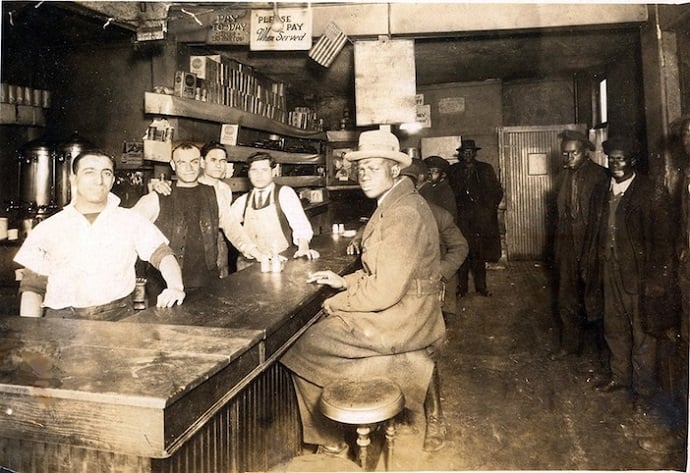
This powerful photo shot at a Greek-owned diner in Pittsburgh’s Hill District circa the 1930s is an emotional reminder of how newly arrived Greek immigrants treated African Americans.
The owners are pictured serving their patrons more than three decades before the Civil Rights Movement took place.
The first Greeks arrived in the region of Pittsburgh in the late 1800s. Many of the workers who came to Pittsburgh were typically unskilled and found work wherever they could.
According to The American Hellenic Foundation of Western Pennsylvania, there were about 50 Greek immigrants in the city by 1893. Most of whom were sailors from the various Greek islands. Most began with manual labor but would come to open their own businesses.
Many of the first immigrants were men because they intended to work then return to Greece. According to the book They Came to Pittsburgh by Clarke Thomas, it was estimated that there were “300 to 400 male Greeks before any women came, the first arriving about 1903.”
In 1912, it is estimated that 20 percent of the Greek men living in Pittsburgh did return to Greece to fight in the Balkan Wars that came before World War I.
Those who remained, and those that followed later, quickly came to realize that to achieve the American dream they would need to strike out on their own. Many opened restaurants, confectionaries, and coffee houses.
African Americans suffered from the Great Depression
The Great Depression of the 1930s worsened the already bleak economic situation of African Americans. They were the first to be laid off from their jobs, and they suffered from an unemployment rate two to three times that of whites. In early public assistance programs African Americans often received substantially less aid than whites, and some charitable organizations even excluded Blacks from their soup kitchens.
In later years, Greek-Americans forged links with black Americans, as they supported the Civil Rights movement of the 1960s.
Greek Archibishop marching with African American rights hero
The best-known instance of support was when Archbishop Iakovos, Archbishop of the Greek Orthodox Archdiocese of North and South America, marched with black leader Martin Luther King Jr. in Selma, Alabama in 1965.
Iakovos, who had experienced religious oppression himself as a child, was a zealous supporter of human and civil rights and backed King’s cause with his actions — a rarity among the high clergy from any denomination in those days.
He became the only church leader who had the courage to walk hand-in-hand with Martin Luther King during that famous march in Selma.
The LIFE magazine cover of March 26, 1965 marked that historical moment, showing a formidable-looking Iakovos standing to King’s right. (The entire magazine is online and can be read here.)
The New York Times reported: “The striking cover of Time magazine that showed Dr. King side by side with the black-garbed Archbishop Iakovos marked a new presence of Greek Americans and the Greek Orthodox Church in American life.”

See all the latest news from Greece and the world at Greekreporter.com. Contact our newsroom to report an update or send your story, photos and videos. Follow GR on Google News and subscribe here to our daily email!



